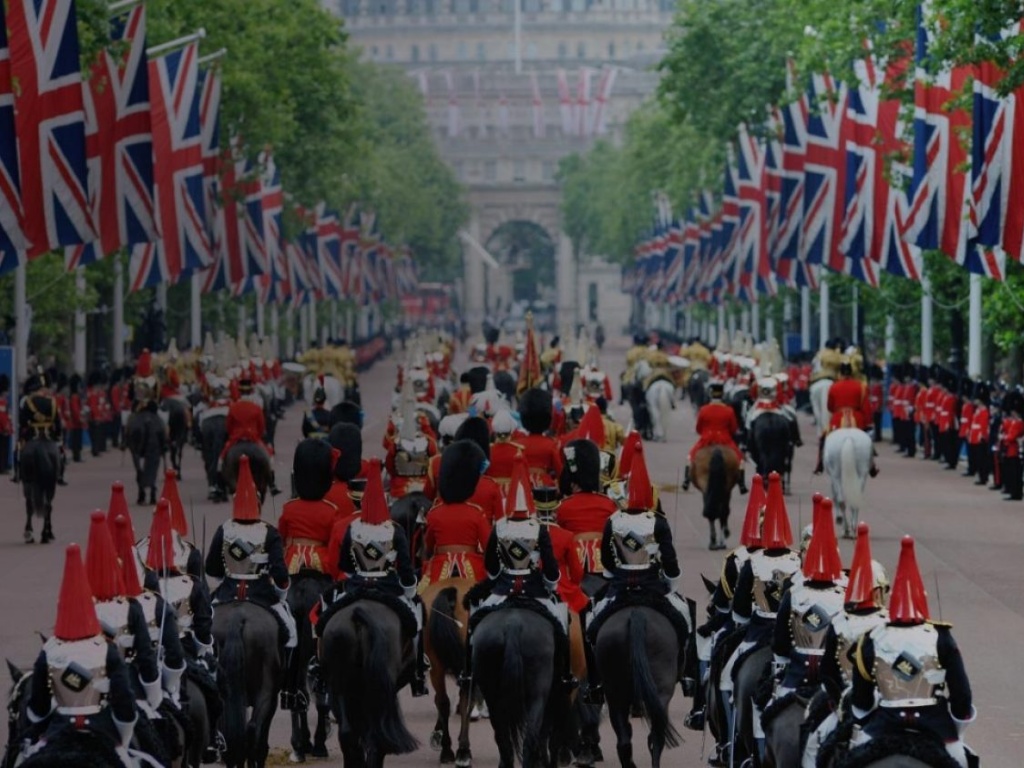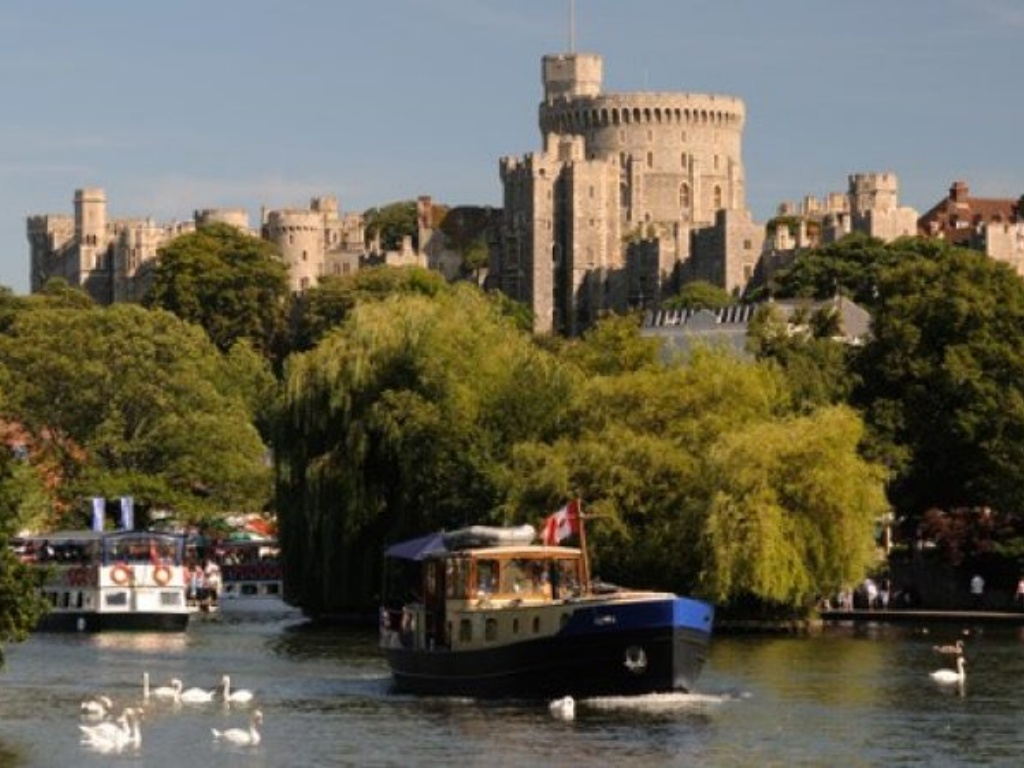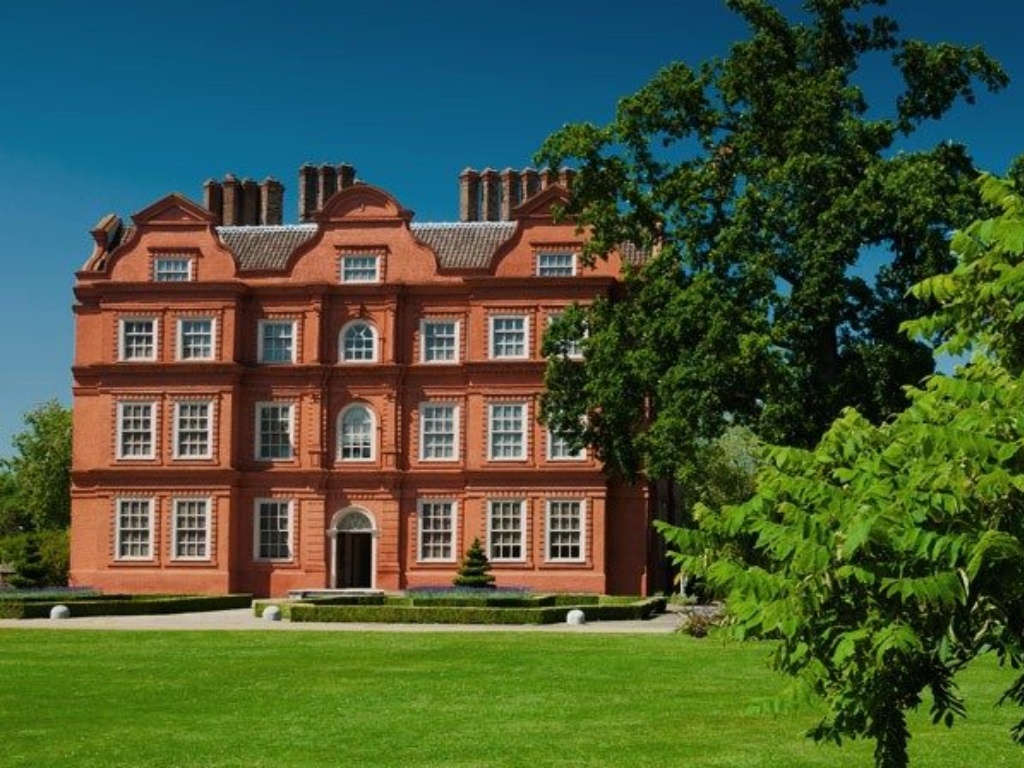
From watching the pageantry of Changing the Guard at Buckingham Palace to getting lost in Hampton Court maze, set out on a discovery of the Royal residences in London.
Each June, London celebrates the Queen’s birthday at the ceremonial Royal Parade to Buckingham Palace, known as Trooping the Colour. A British tradition since 1748, the sovereign’s birthday has been marked by this special parade by the Grenadier Guards every year since (baring the two World Wars).
Just a short train ride from London, Windsor is an easy day trip to take from the capital. And it’s well worth the journey for a tour of the Queen and Duke of Edinburgh’s country residence, Windsor Castle. The largest and oldest inhabited castle in the world – with sections of the building that showcase its opulent decor and rich heritage open to the public – the castle is a fascinating place to visit, even without coinciding your trip with a Royal occasion.

Arguably the most famous of the Royal residences in London is the home of the Queen and Duke of Edinburgh, Buckingham Palace. And justifiably so, with all the grandeur, heritage and deep-rooted tradition that characterises a Royal palace. It’s the pageantry that takes place here that visitors are most intrigued by, and it’s the guards in red coats and fur hats that people encounter first. The ceremony so many people come for, Changing the Guard, takes place between 11:15 and 12:00 daily from April to the end of July, and on alternate days throughout the rest of the year. As one regiment takes over from another, the New Guard march from Wellington Barracks to Buckingham Palace. Having proven to be of immense interest to visitors from across the world, there’s even an app o find out more about the British custom.
In the Royal Borough of Kensington and Chelsea, Kensington Palace has remained a Royal residence since the 17th century, and is now the London home of the Duke and Duchess of Cambridge, Prince William and Kate. Despite largely being a private home, the palace’s staterooms are open to the public, along with The Palace Gardens.
Commissioned by Henry VIII, the Tudor-style St James’s Palace is no longer used as an official Royal residence but as the setting for formal occasions instead. However, Clarence House, which sits alongside St James’s Palace, is the London residence of Charles, The Prince of Wales and The Duchess of Cornwall. Just like Kensington Palace, a section of the house is open to visitors, with guided tours to join.
Many of the Royal palaces in London are no longer official residencies, but have so much history and such fascinating stories to tell that they’re exceptional places to explore. Within southwest London’s verdant Kew Gardens you’ll find Kew Palace, the Georgian home of George III, Queen Charlotte and their 15 children from 1729 to 1818. The public can now wander between each of the restored rooms including the Royal Kitchens, considered the highlight for most visitors.

The London residence of infamous King Henry VIII was Europe’s largest palace, the Palace of Westminster. But now, after a fire tore through the palace in 1698, the only section remaining is the lavish Banqueting House, where ceremonies and entertainment would have once taken place. People are still captivated by the site, largely due to the painted ceiling by legendary Flemish artist, Sir Peter Paul Rubens.
Finally, visitors can take a diversion from the centre of the city to the London borough of Richmond upon Thames, where Hampton Court Palace (thought to have been a favourite of Henry VIII), is set amidst 60 acres of gardens. Explore the palace’s staterooms and Tudor kitchens, browse art by the great masters in the Cumberland Art Gallery and try to find your way around the famous Hampton Court maze.
Written by Lauren Hill
Image credits:
Royal Parade at Buckingham Palace © iStock: oversnap
Windsor Castle © iStock: jvoisey
Kew Palace © iStock





.jpg.transform/375x812/image.jpg)
.jpg.transform/375x812/image.jpg)
.jpg.transform/375x812/image.jpg)